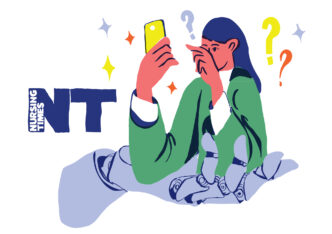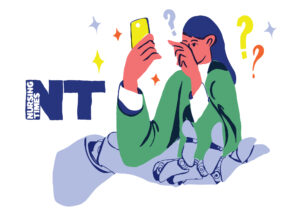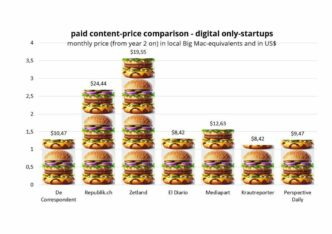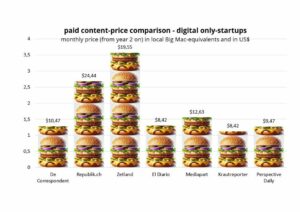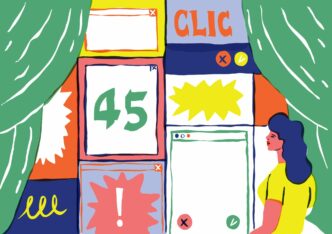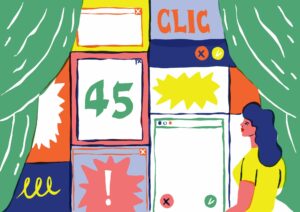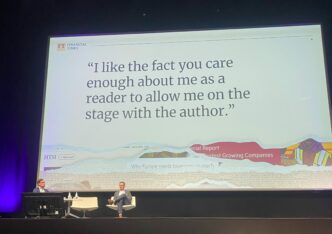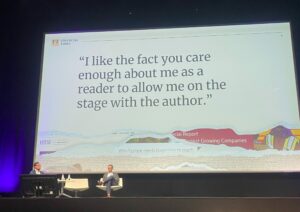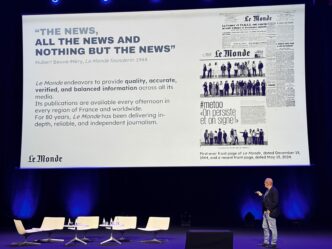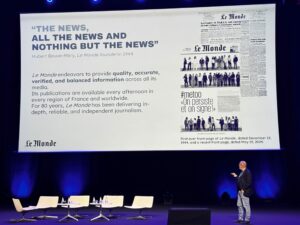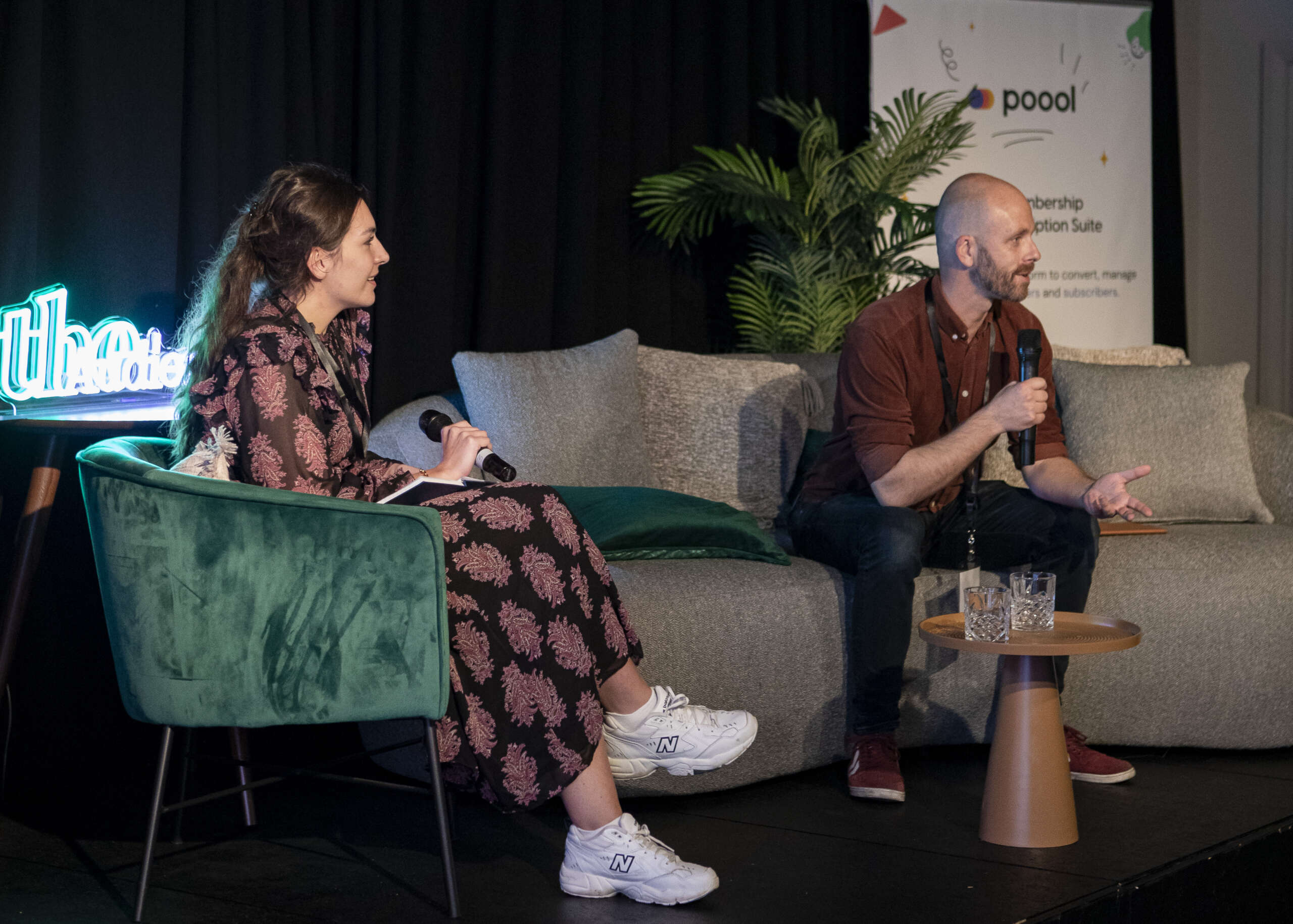

The Audiencers' Festival in London in October 2023 did not disappoint! With 145 digital publishing professionals the afternoon was filled with insightful conversations both on and off stage. To reflect this, we're publishing not just one, but a series of takeaway articles from the event!
Our final session of the day: The art of translating between editorial and commercial
On the panel:
- Maria Bissendorf, Head of Membership Development, now Head of Transformation at Hearst UK
- Morten Ro, Independent engagement designer and advisor
As an external engagement strategist, Morten has had to learn the languages spoken by those across publishing teams in order to understand their context and help to build new mindsets (which often get termed ‘audience-first’, or ‘membership’). From his experience, teams often don’t agree which is the ‘right’ language and mindset. But, in fact, the truth lies in between:
Instead, collaborate and explore a new, shared language. The only place to look for the truth is by connecting deeper with your audience, those at the strategic core of it all.”
A membership / audience-first pivot essentially looks like this:
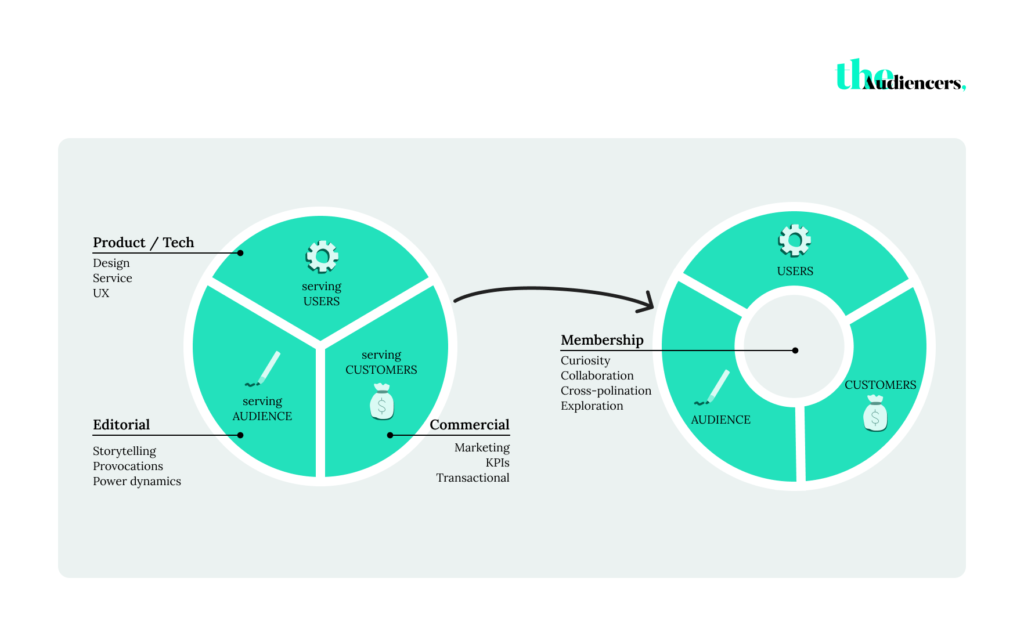
The most powerful role in this pivot is a bridge role. This bridge-builder, translator and collaborator will be able to do the ground work between teams before trying to gain support and buy-in from senior leadership, and using patience and experimentation to show the benefits of cross-silo and cross-language efforts.
And this is the context of Maria’s work at Hearst UK.
3 years ago, the company put their foot on the pedal to launch a digital membership model. But what wasn’t in place back then was a structure and mindset to support this move, and drive success – such as membership or engagement roles, product teams, investment into product, customer experience and UX thinking, etc.
At the time, digital was a scale play, built around traffic and reach rather than bringing audiences back and keeping them, understanding what the reader is doing and why. Afterall, memberships are a product whereby teams need to turn digital content into an engagement play.
Changing organizational charts and KPIs is the simple part of the process. What’s tricky is getting people on board with this new direction and approach, changing mindsets on what’s good“
> Also from The Audiencers’ Festival: Bridge roles in practice: the models, strategies and structures for success
A new mindset that connects old languages at Hearst
Having previously worked in marketing and events, Maria moved into this new thing called ‘membership’ in 2020 with the goal of launching ASAP. However, she quickly realized that the structure wasn’t there. Whilst subscription targets could be hit with little collaboration in a print-driven mindset, siloed teams wouldn’t work for digital membership models.
So, whilst Maria’s role was to develop the membership product, focussing on the ‘what’ alone wouldn’t work. In order to achieve this goal, silos would need to be broken down and mindsets changed to have engagement and conversion as key performance indicators, instead of reach.
This involved 3 key areas of work:
- Ways of working: membership will bring the organization together organically, with constant product iteration, paywalling the website and full funnel approach. This means challenging habits and familiarity, and being prepared to fail, something we naturally avoid
- Building a shared language: this often happens organically as you begin collaborating
- Reorganizing: some barriers need to be broken down. The key learning here, for Maria, is that senior leadership needs to be on board. “It’s amazing how fast barriers can get removed if the senior leadership is on board”
Difference in languages: how did that show most concretely?
“The same conversations with different teams had very different outcomes!”
There’s a huge spectrum between teams:
- Marketers are often the most chameleon-like
- Editorial and tech are usually the furthest away from each other as their worlds didn’t meet before. Editorial teams are creatives, storytellers, ideas machines, opinion leaders. They’re quick decision-makers but also quick to change their minds
- Tech has their own language (literally!), many acronyms, all about detail, sprints are locked in, juggling lots of dependencies
- ALL teams are flexible and can respond to the user/reader needs, but the challenge can be bringing them on the same page with what we’re doing, or not doing (just yet), as the lead times that they’re used to are incredibly different
How can you bring these two teams closer together?
- Separated briefing sessions to stay within each teams’ language and give them the details that only they are after (time efficient), then run combined status sessions to build trust and respect
- Build a shared understanding for what we do right now, what we do later, what we don’t do and why, and keep re-enforcing that where needed
- For any ideas that we’re not using right now, save them for later so everyone feels their voice is heard. At the same time, this promotes a focused approach to continue moving in a single direction, which keeps more techy folks happy
- Understand that some words are particularly delicate, mostly the very basics, such as “readership” vs “user” vs “customer” vs “audience”. It’s not about arguing over which to use but making sure everyone’s on the same page and understands each other
The skills needed for this bridge role
Absolute clarity:
What are we doing, why are we doing it. But just as importantly, what are we NOT doing, why are we NOT doing it?
Why is this such a challenge in itself?
- Leaders and managers aren’t often aware of all the projects happening across the organization, which means they don’t have an accurate perception of people’s workload
- Leaders and managers aren’t aware of the “multiplier effect” — that one initiative in one department could require resources from another, which could stretch them too thin
- People leave or are let go, but their work is simply transferred to another employee
Empathy:
“I hear this a lot where teams clash and people mistake ‘someone that’s not easy to work with’ with ‘unaligned objectives or difference in language‘.”
Communication:
Consistently speaking to all teams, which is probably the hardest part because it’s both proactive (e.g. giving KPIs) and reactive (e.g. catching when something goes wrong and correcting it)
“The way to be successful in a bridge role previously came down to your personal relationships, your social capital and your network within the organization,” says Robin Kwong, new formats editor of The Wall Street Journal, on the Journalism.co.uk podcast.
“Now that it’s more mature, it really comes down to having common goals and documentation, and set processes for how you communicate with each other.”
How do you decide what is truly not worthwhile?
Ask your teams, regularly and often, “What are you doing that you don’t think is a good use of your time, and why?”
The American Press Institute recommends this framework:
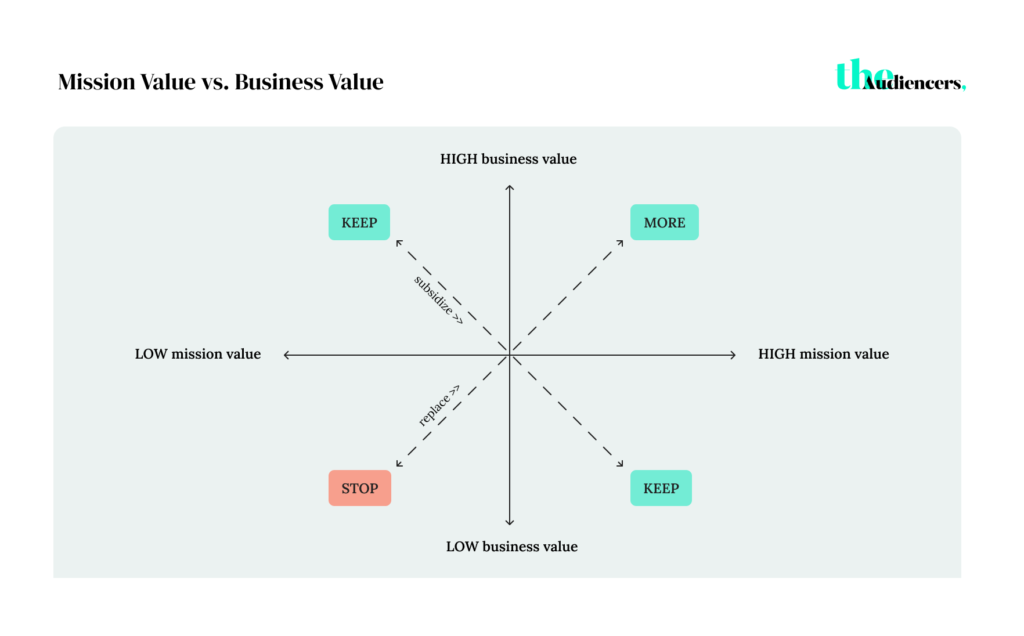
“In the top-right quadrant are items that both drive revenue and are aligned with your news organization’s mission — enterprise reporting that is shown to engage readers and drive subscriptions, for example. Things that fall into this category of work are likely worth continuing.
In the bottom-left quadrant are items that neither drive revenue nor are central to carrying out your mission. Consider this category the “low-hanging fruit” in your effort to cut out low-value work.
Things that fall into the top-left quadrant — they drive revenue but aren’t “mission-critical” — may be worth continuing and can help “subsidize” the work in the bottom-right quadrant, which doesn’t necessarily drive revenue but nonetheless is central to your mission.”
Tips for staying patient and keeping focused
Reflection:
“Back to my point about empathy, you have to ask why something is not working. What do they need to hear? How can I be honest with them but also give them what they need? For example, discussing what is and isn’t in scope with an editorial team. How we have to start small and simple, something that they’re not used to thanks to their print mindset where they could only send the ‘perfect product’.”
Be comfortable with success not always being defined by KPIs:
“There’s no doubt that we need KPIs, but realizing that you’re making headway in bringing teams together is just as valuable. For example, I don’t yet have an engagement target for our products but there’s nothing more satisfying than having conversations with an editor and a marketeer whereby the editor has an idea, the marketeer underlines it as they can see the customer in front of them and I can imagine what this looks like as, for instance, the app.”
Morten’s perspective
“Building audience and membership mindsets is a marathon, not a sprint, and you need allies in other parts of the organization. Look for bridge roles, creatives, non-ego and low power people who aren’t protective of their own silo or language. Build a creative and playful space to explore where your languages and success metrics overlap and differ (this might be in your spare time if needed). Build a catalog of experiments that you’d love to do. Wait for the right opportunity to pitch. Pitch experiments as a learning effort and document extensively to make learning a success metric in its own right.”
A final takeaway?
You’re not alone! You’re actually at the center of it all.
Learn the internal politics, but don’t choose a side. You’re the audience advocate.
Senior leadership owns the keys to your success – are they bought in and do they support you and your role? Offer a way to document/illustrate that your discipline is different and important.

